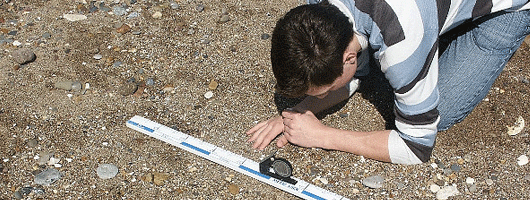 Geography | GEOG
Geography | GEOG
P Prerequisite | C Co-requisite | R Recommended
I Fall Semester | II Spring Semester | S Summer Session/s
- GEOG-B 190 Human Behavior and Social Institutions (3 cr.) Develops insights into human nature, the nature of social institutions, the social processes that have shaped the world of the 21st century. In an interdisciplinary way, introduces the distinctive perspectives of the social sciences, emphasizing frameworks and techniques used in explaining causes and patterns of individual and institutional behavior.
- GEOG-G 107 Physical Systems of the Environment (3-5 cr.) Explores the physical processes of the Earth--its weather, climate, landforms, oceans and ecosystems--and analyzes a range of environmental issues.
- GEOG-G 110 Introduction to Human Geography (3 cr.) How do languages, religions, customs, and politics change from local to global scales? Learn how humans shape geographic patterns of migration, agriculture, industry, and urbanization.
- GEOG-G 120 Regions of the World (3 cr.) What do bananas, the 1979 Islamic Revolution, and drone warfare have in common? How do economic development, geopolitics, and resource extraction shape current events? Answers to these and other questions are used to explain the roots of contemporary global events.
- GEOG-G 201 World Regional Geography (3 cr.) Analysis of population, culture, environment, and economis of major world regions. Examination of issues of global importance, including: development, demographic change, urbanization and migration, and international conflict.
- GEOG-G 213 Introduction to Economic Geography (3 cr.) Principles of economic geography including theories concerning industrial location, competition for land, economic nature of resources, and geographic background of inter-regional trade.
- GEOG-G 306 Current Issues in Globalization, Development, and Justice (3 cr.) P: GEOG-G 110 or junior standing. An examination of current problems concerning globalization, development and justice from a geographical perspective. The specific topic to be considered will vary from semester to semester. May be repeated once for up to 6 credits.
- GEOG-G 313 Place and Politics (3 cr.) P: GEOG-G 110 or 3 credit hours of political science, or consent of instructor. Geography and spatial relationships shape and are shaped by political processes. What drives the geography of elections and political parties, nationalism, environmental and urban movements, war, imperialism, and borders?
- GEOG-G 315 Environmental Conservation (3 cr.) C: Junior standing This course deals with the environmental impact of global population growth, natural resources utilization, and pollution. Current problems relating to energy consumption, farming practices, water use, resource development and deforestation will be examined from geologic and ecological perspectives. Strategies designed to avert predicted global catastrophe will be examined to determine success potential. Class participation through debate is strongly encouraged. Students should be able to use the internet as a resource.
- GEOG-G 320 Population Geography (3 cr.) C: Junior standing or consent of instructor. Study of population growth, compositional change and redistribution at regional, national and global scales. Topics include population pressure, fertility control, aging of societies, AIDS epidemiology, immigration, and population policies.